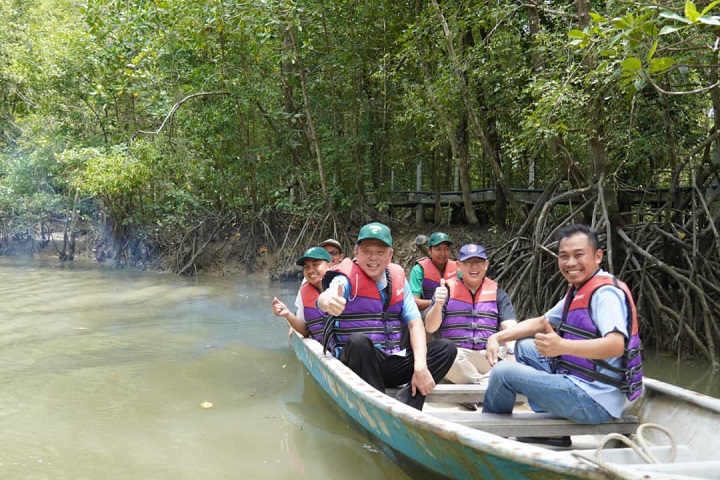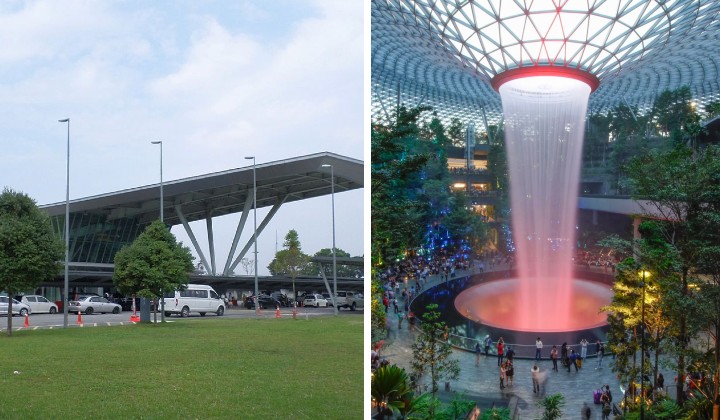Johor’s Pulau Kukup Reopening Sheds Light On Its Shadowy Past
In 1878, Pulau Kukup was gifted to a rich merchant named Syed Mohamed AlSagoff who turned the pirate haven into a profitable estate.

Subscribe to our FREE Newsletter, or Telegram and WhatsApp channels for the latest stories and updates.
The Pulau Kukup National Park in Pontian, Johor is set to welcome visitors again at the end of April or early May after being closed for over four years.
The 647ha national park was once a popular attraction before it closed for repairs. Some facilities like the island’s jetty needed repairs.
According to The Star, the state government spent RM600,000 to build a temporary floating jetty while the Iskandar Regional Development Authority gave RM2.4 million to repair and upgrade the other facilities on the island.
The Johor National Park Corporation were also given about RM20 million from the Tourism, Arts, and Culture Ministry to build a brand-new jetty and other facilities.
With the temporary jetty, the number of visitors to the island will be limited for the time being.

The interesting history of Pulau Kukup
Pulau Kukup, also known as Cocob Island, is one of the largest mangrove islands in the world.
According to an article published by Free Malaysia Today, apparently Sultan Abu Bakar of Johor gifted Pulau Kukup to a rich Arab Peranakan merchant, Syed Mohamed AlSagoff, in 1878 and 1884. The AlSagoff heir was known to be close to the sultan and was one of the first commoners to receive a medal and a royal title in 1886.
AlSagoff helped to manage the sultan’s businesses with Singapore and Europe. As a token of appreciation, AlSagoff was allowed to choose an island of his liking as a gift.
AlSagoff initially wanted an island in the east but most of the islands there have been awarded to a Chinese merchant named Wong Ah Fok.
He finally settled on choosing a section of Pulau Kukup because the other section belonged to a Chinese merchant named Tan Eng Kwang who possessed a “surat sungai” in 1878 and 1880.
Pulau Kukup was turned into his own state named Constantinople Estate and the island has its own currency worth $2.00, $1.00, 50 sen and 25 sen.
The land was used to farm sago, coconut, areca, and coffee and it brought AlSagoff tons of profits, effectively turning the former pirate haven into an abundant island.
AlSagoff also founded a shipping company, Alsagoff Singapore Steamship and Co, to take pilgrims to the holy land. Before this, the monopoly to send pilgrims was held by the Dutch East Indies.
The article claims that AlSagoff’s company would charge exorbitant fees and exploit its customers by way of “contract-ticket” which forced customers who failed to pay their ticket loans to work in Pulau Kukup or Constantinople Estate until their debt was completed.
Due to the high ticket fees, many passengers found themselves trapped as labourers on the island.
Supposedly the terms and conditions of buying the ticket had been written in English, and most people then were illiterate.
The situation was so bad until a historian J.M. Gullick in 1984 said AlSagoff managed to reintroduce the concept of slavery in Pulau Kukup.
Constantinople Estate soon faced various problems and AlSagoff sold part of the land to Peneiro Planting Syndicates in 1906. In 1926, the British empire took back the island.
In current times, Pulau Kukup has been recognized as a Ramsar site in 2003, a wetland designated to be of international importance under the Ramsar Convention, also known as The Convention on Wetlands.
There are 27 mangrove species on the island and there’s a conservation programme by the World Wide Fund for Nature (WWF).
Share your thoughts with us via TRP’s Facebook, Twitter, Instagram, or Threads.





